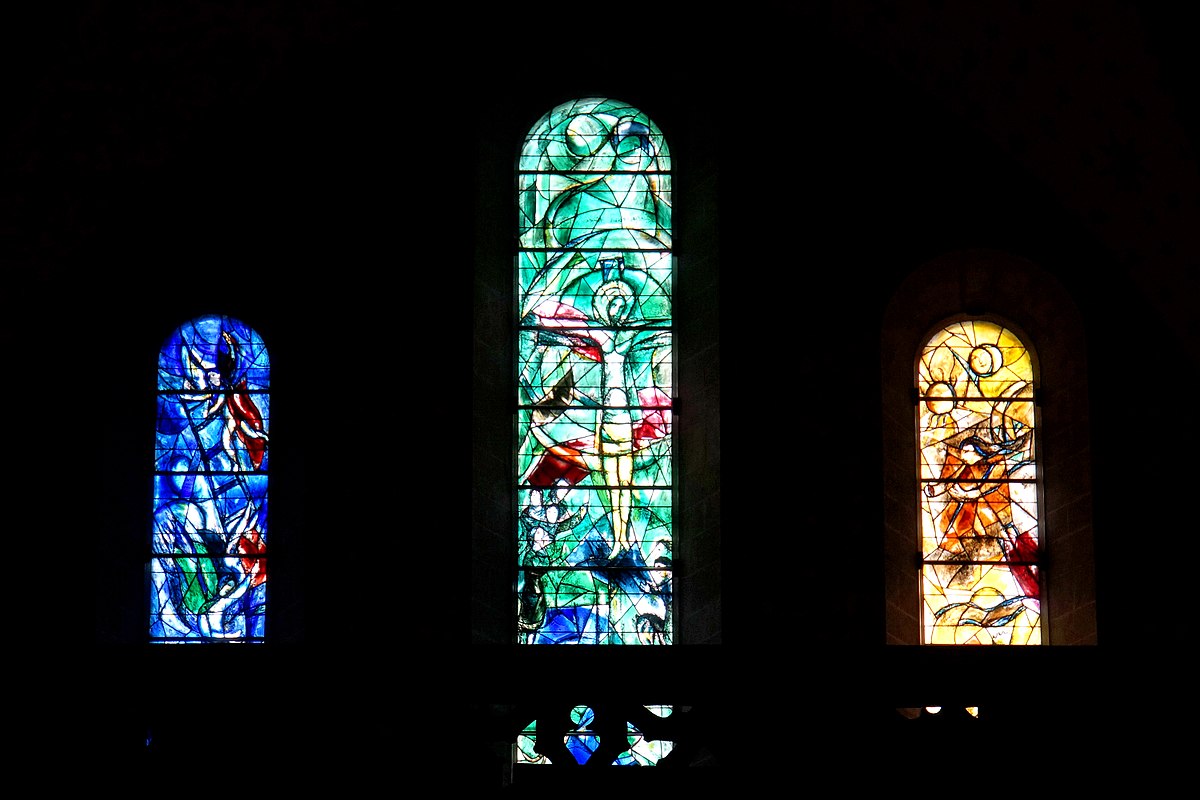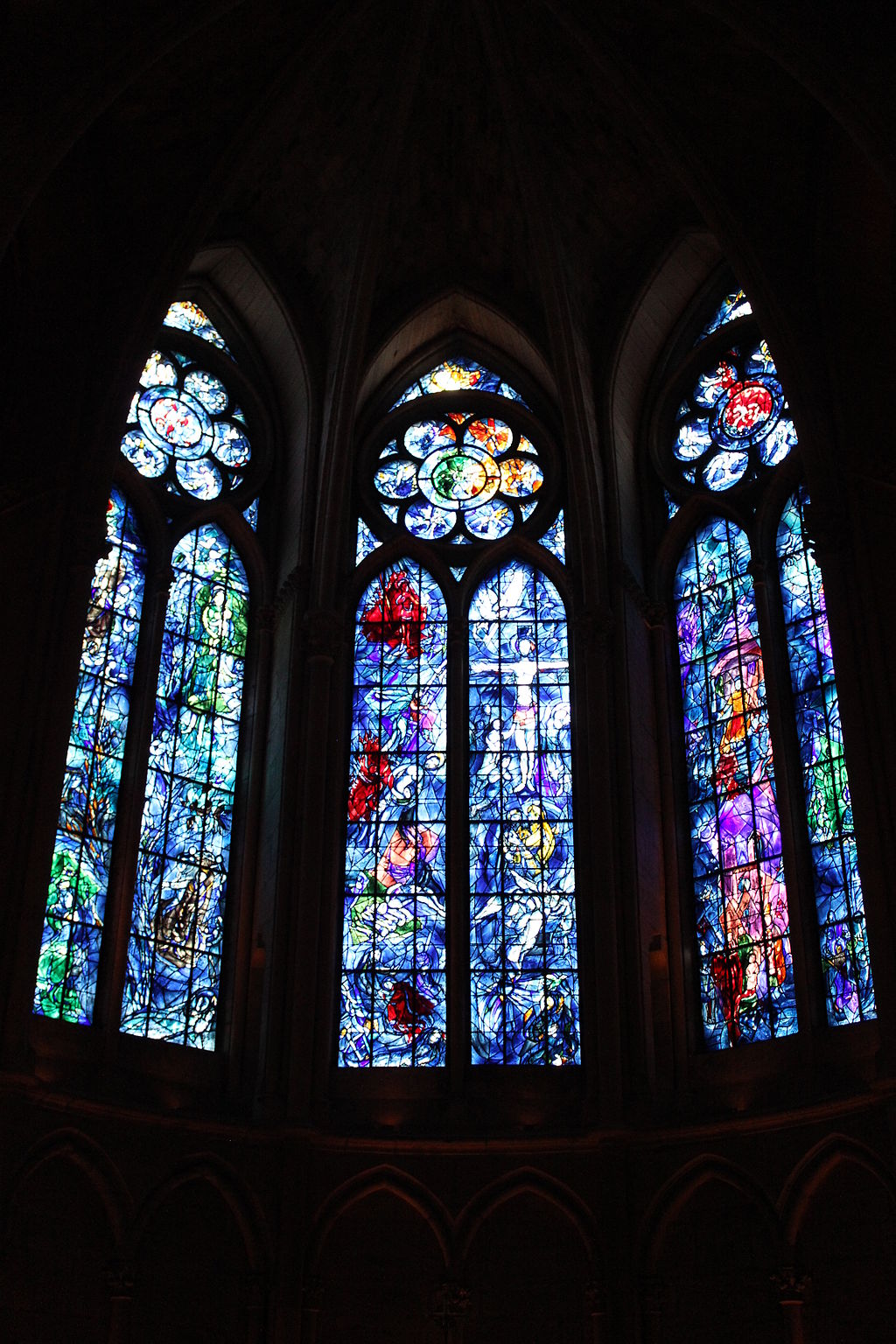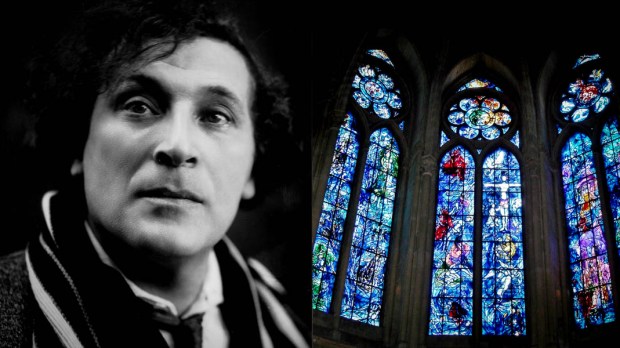In his 75-year-long career, Russian-French painter Marc Zakharovich Chagall, born Moishe Zakharovich Shagal in Liozna, Belarus, in 1887, was able to synthesize elements of Fauvism, Cubism and Symbolism into an idiosyncratic style that set him apart from any other artist of his time. Pablo Picasso famously stated that after French expressionist Henri Matisse had died, no other painter could “get color” like Chagall.
Chagall’s dreamlike style and choice of subjects—love, faith, grief—gave his works a deep-felt humanity that differentiated itself from much of the abstract and intellectual creations of his modernist contemporaries.
As Jean-Michel Foray, the director of the Marc Chagall Biblical Message Museum in Nice, France, put it: Chagall was the painter who “restored to art the elements that modern artists rejected, such as allegory and narrative—art as comment on life.”
In his early seventies, the Russian-born master started to experiment with stained glass, a technique that was well suited to bringing to life his bright-colored, dreamlike images.
Over the course of 15 years, Chagall designed iconic glimmering blue windows in both synagogues and churches around Europe that are now known as “peace windows.” Born into a Jewish family, the artist spent much of his life in Catholic France and said he was interested in spreading a “universal message” of peace, love and tolerance using both Jewish and Christian themes.
“For me a stained-glass window is a transparent partition between my heart and the heart of the world,” Chagall said. “It is something elevating and exhilarating.”
Some of the most striking “peace windows” depicted by Chagall include:
1. Fraumünster cathedral, Zurich, Switzerland
One of the oldest churches of Zurich, Fraumünster cathedral was built on the remains of a former abbey for women founded in 853 by Louis the German, the grandson of Holy Roman Empire ruler Charlemagne. Chagall painted five 32-foot windows on the four walls of the church, with biblical motifs including Moses receiving the Torah and Jesus’ crucifixion. The 80-year-old master used his famous green and blue tones to represent earthly scenes, such as Moses holding the Ten Commandments tablet, while opting for warmer colors such as red and yellow to represent heavenly subjects, like the ascent of the Prophet Elijah into heaven.

2. All Saints’ Church, Tudeley, Kent, England
Built in the 12th century and decorated by Chagall in the 1960s, All Saints’ Church is the only church in the world featuring stained glass designs by the French-Russian master in each of its windows. Chagall was originally commissioned with the decoration of a single window in honor of the death of Sarah, the daughter of local baronet Sir Henry d’Avigdor-Goldsmid, who drowned in a sailing accident. But upon visiting the church the painter was so impressed by the way light shone through the remaining apertures that he decided to paint them all—he allegedly exclaimed “C’est magnifique! Je les ferai tous!” (“It’s magnificent! I will do them all!”).

3. Reims Cathedral, France
The historic High-Gothic Cathedral of Reims, in France’s Grand Est region, features three stained-glass windows in the axial chapel decorated by Marc Chagall. The cathedral, built between 1211 and 1516, was at the center of French Catholic life during medieval times—it was here that the official crowning ceremonies for the French Royals were held. It originally featured stained-glass windows that eventually faded over time, so Chagall tried to replicate the original medieval palette with its ancient blue tones. It took six years for the Russian master and his collaborator Charles Marq to complete the 10m-high windows, composed of six lancet and three small rose windows. The left window depicts the Tree of Jesse, which in the Bible is linked to the genealogy of Mary. The central window depicts the story of Abraham and the last moments of Christ’s life while the right window contains images associated with the history of the cathedral, such as the royal crowning ceremonies.

4. Saint Stephen Church, Mainz, Germany
Built between between 1290 and 1335 on the foundations of an Ottonian pre-Romanesque church, Saint Stephen was conceived by the Archbishop of Mainz and Archchancellor of the Holy Roman Empire as the “Empire’s Place of Prayer.” It features nine stained-glass windows by Chagall that were designed as part of the church reconstruction after the Second World War. Three central windows, titled “Vision of the God of the Fathers” and “Vision of the History of Salvation,” were completed between 1978 and 1979. The remaining windows, under the theme “Praise of Creation,” were created in the east choir over the following two years. Chagall, who became an honorary citizen of Mainz, completed his final window shortly before his death at the age of 97.



